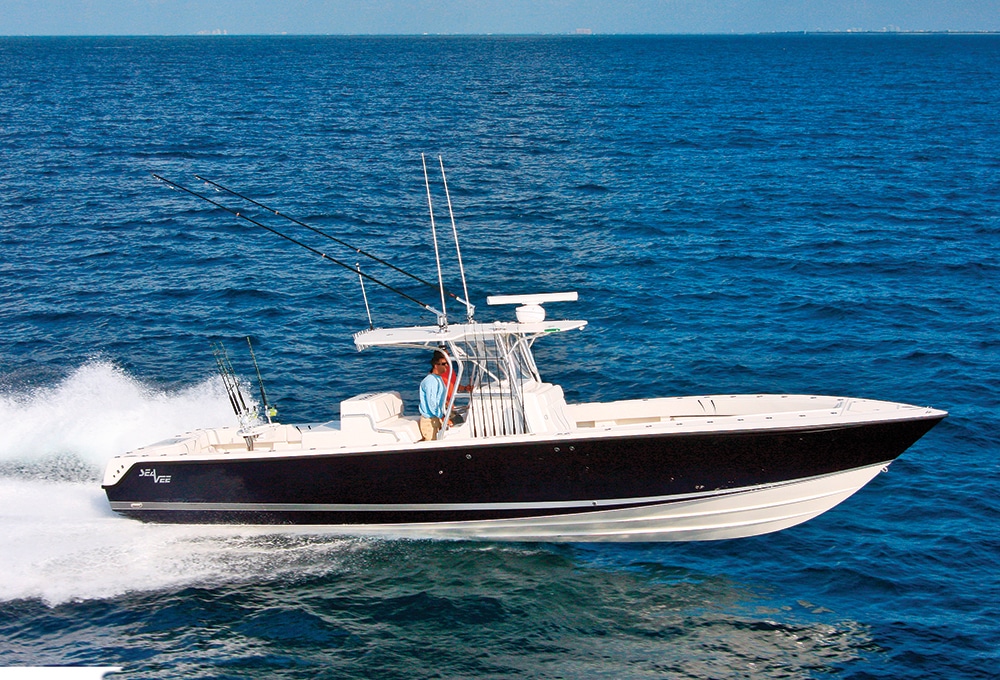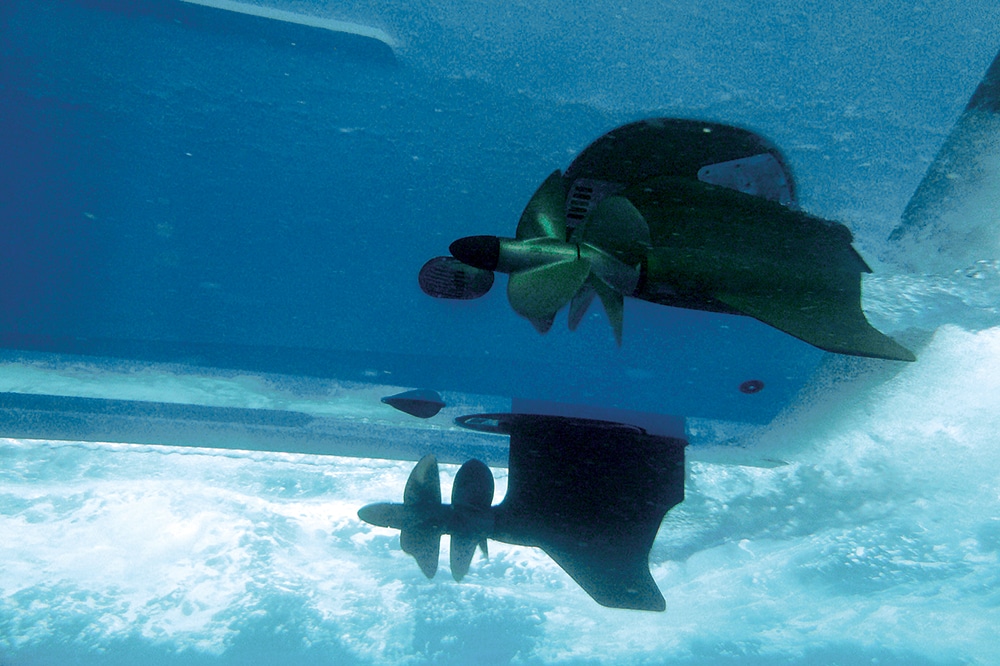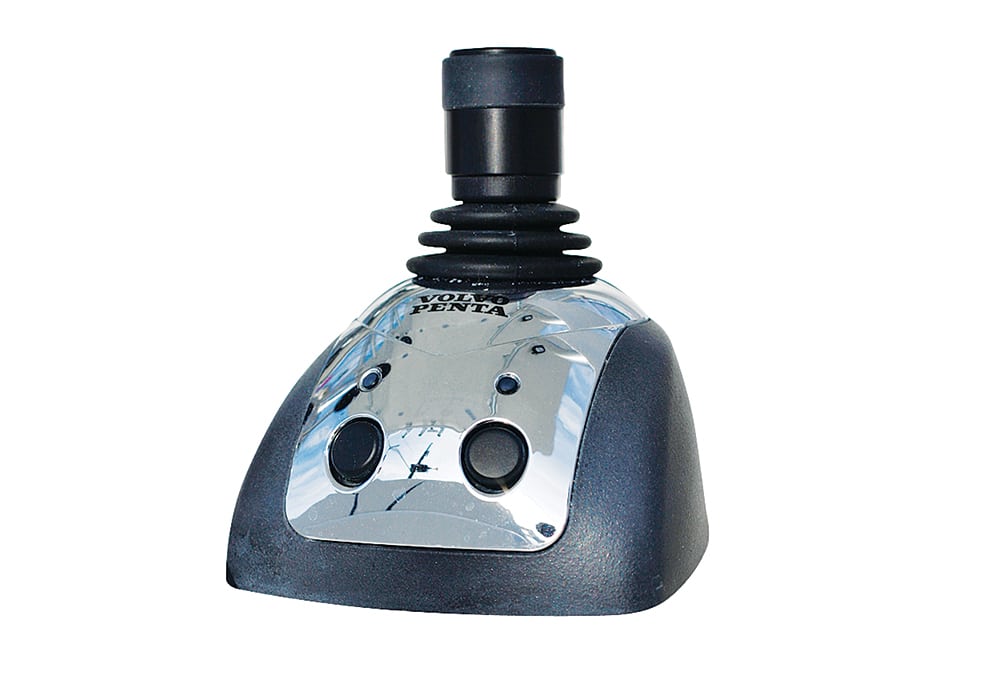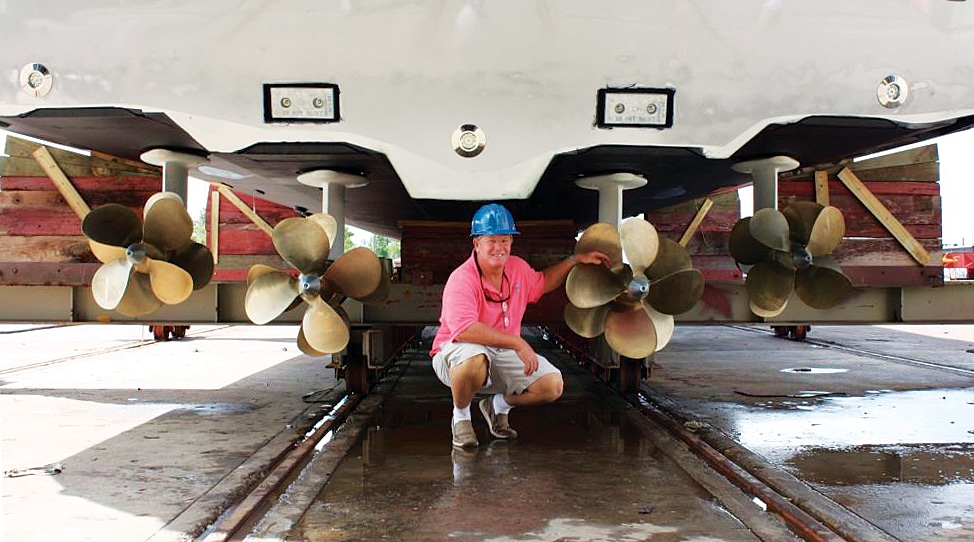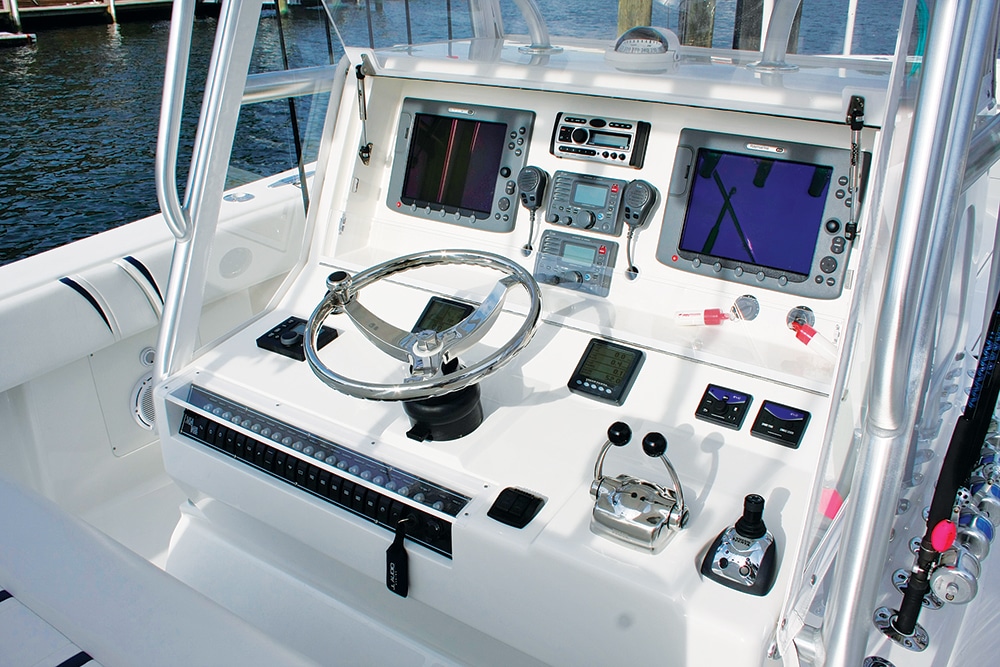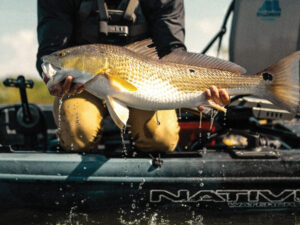When it comes to offshore trolling, twin-diesel inboards have long reigned supreme, proven to lay down clean trolling alleys and raise fish. For many veteran trollers, there’s nothing better. Or is there?
The advent of diesel pod drives from Mercury Zeus, Volvo Penta IPS and ZF Marine has introduced major advantages. Unlike the straight-shafts, twin pods can swivel independently, providing directional-steering thrust that results in superb control. An integral joystick allows for precise low‑speed maneuvers.
Thanks to horizontal thrust (versus the downward-angled thrust of inboards), less drag (as a result of less running gear) and twin counter-rotating propellers (for less prop slippage), pods are also more efficient than straight-shafts. You don’t need as much horsepower to cruise at the same speed as with inboards. That also equates to more miles per gallon.
On the Troll
Yet, do pods troll well? Do they lay down desirable wakes? Can they raise fish?
The answer to all three of these questions is an unequivocal yes, according to Paul Spencer, founder and president of North Carolina-based Spencer Yachts. Established in 1996, Spencer builds custom sport-fishing boats from 37 to 87 feet in length. In recent years, Spencer has equipped a number of boats with pod drives, giving the builder a chance to compare the two types of propulsion systems.
“To me, pods fish every bit as well, if not better, than inboards,” says Spencer.
It starts with the trolling alleys, which tend to be cleaner with pods than with inboards, he says. Less hardware in the form of prop shafts and rudders also means less turbulence, less white water, and cleaner wakes.
Also, because pods provide better steering control, a helmsman can shut down one engine and troll on the other, eliminating 50 percent of the prop wash, Spencer explains.
Raising Fish
Determining whether pods raise fish as well as inboards is tough to quantify. Yet Spencer points to successful boats as evidence that pods can hold their own in competition.
“One of the first boats we built with pods was a 49-footer, and it was among two pod-drive boats that competed in the Custom Boat Shoot-Out in Abaco, Bahamas, which was limited to 40 boats,” he says. “While neither won, one boat led for a while, and both placed near the top.”
Spencer also proudly points to the biggest sport-fishing boat his company has built, the 87-foot Betsy, which has four 1,150 hp Caterpillar C18 diesels, each connected to a ZF Pod 4000 drive. In 13 months, the crew of Betsy caught and released more than 250 blue marlin, most of them in waters off the Dominican Republic, he says.
Betsy also proves that super-yachts are not exempt from marlin fishing, and pod drives are the reason. Spencer explains, “It’s far more maneuverable than the same-size boat with inboards.” Pods allow the captain to keep a hooked marlin where it can be fought from the stern.
Outboard Alternative
Pod-drive systems can also improve trolling results on smaller boats, according to Robbie Buckley, who moved from triple outboards to twin Volvo Penta IPS 600 diesels on a SeaVee 390 center-console. The Pompano Beach, Florida, resident likes high-speed trolling for wahoo at the Little Bahama Bank, and pod drives prove superior for this technique, he says.
“We need to troll around 15 to 16 knots for wahoo, but outboard boats don’t run well at that speed,” Buckley explains. “They tend to run bow high and wallow.”
With pod drives, the boat runs level, improving not only crew comfort but also fuel efficiency. His previous center-console with triple 275 hp four-stroke outboards burned 200 gallons of gasoline for a day of fishing, while the 390 with the twin Volvo Penta 435 hp diesels connected to IPS pod drives burns just 90 gallons.
Buckley says the trolling alleys are also cleaner with pods. “They are very clear. You can see your trolling lures. The wakes from outboards are full of white water,” he says. His wahoo catch rate has remained steady since he switched to pod drives.
Pod Pricing
Are there any downsides to pod drives? For one, there’s the initial cost. According to Spencer, you’re looking at around 20 percent more for a pod-drive system versus straight inboards in a boat such as the twin-engine Spencer 49. That can amount to about a $200,000 price increase for pods. However, in the stratosphere of sport-fishing yachts, that’s fairly inconsequential.
Diesel pod-drive systems are also more expensive than outboard packages that offer roughly the equivalent horsepower. For example, SeaVee’s 390 with twin Volvo Penta IPS 600s lists for $369,500, while the same boat with triple Mercury Verado 300 outboards is $266,300, according to SeaVee’s marketing director John Caballero. However, the $103,200 price increase for the pod drives includes a joystick-control system, while the outboard cost does not. On the other hand, pod drives cannot be tilted, so if you plan to trailer your boat, you’ll want outboards.
If you’re the kind of boating angler with the need for speed, you’re probably not going to choose pod drives. All other things being equal, outboards can outrun pods by virtue of far less weight (for equal horsepower) and the ability to create greater lift at speed. Pods are at a disadvantage against conventional inboards when it comes to all-out speed. The most horsepower you can deliver through a pod is 1,264 (with the ZF Pod 4000), yet there’s virtually no limit to the power you can turn through a straight-shaft. The more power you have, the greater your speed.
Still, based on the experiences of expert captains, it is clear that pod-drive systems are equal to any other form of propulsion when it comes to trolling, as well as being more efficient. So if you’re considering a new boat for offshore fishing, don’t overlook the possibility of diesel pod drives.
